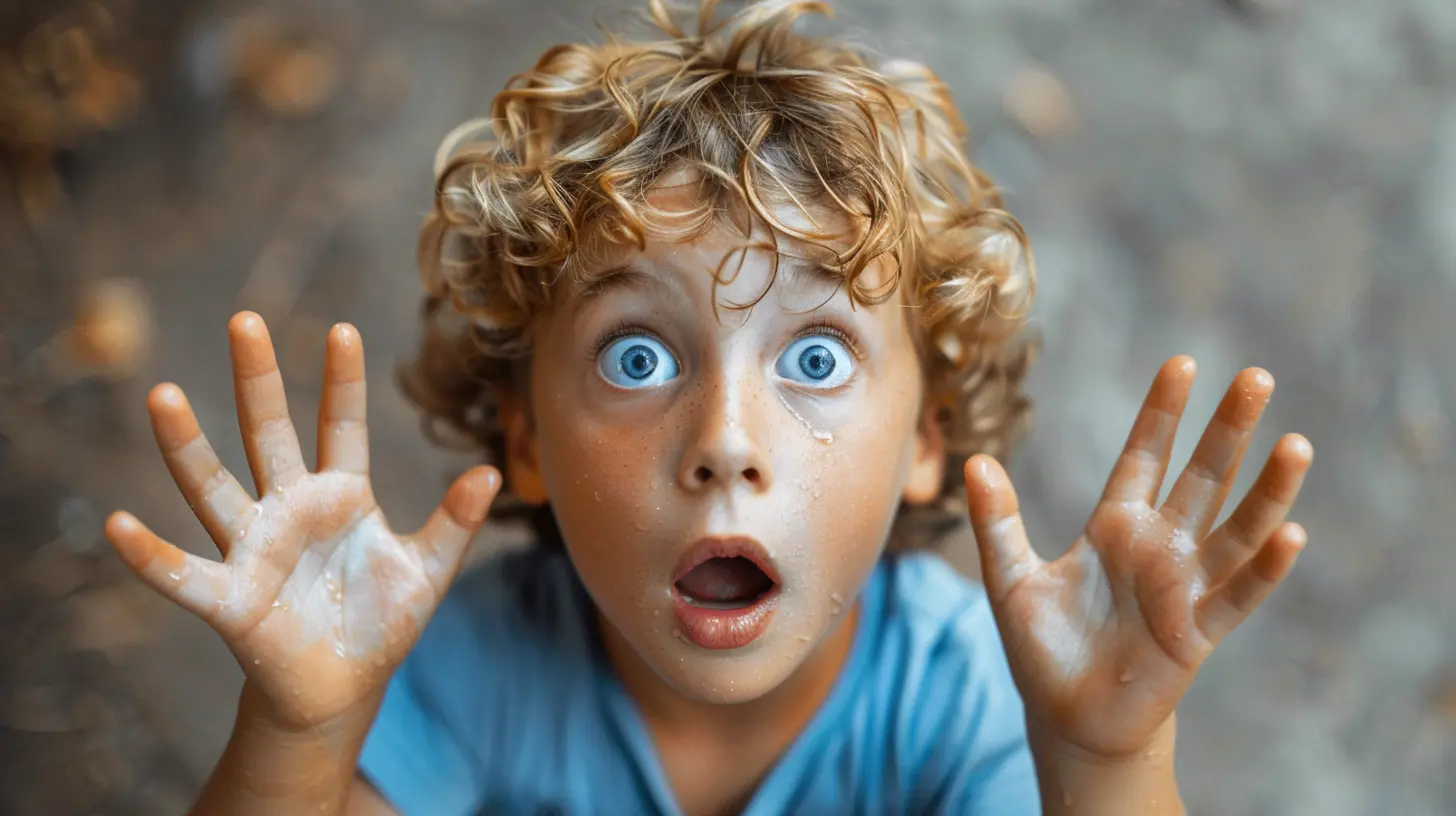Teaching Emotional Regulation: Calm Parenting for Anxious Children
6 June 2025
Parenting isn’t for the faint of heart—especially when you're raising an anxious child. Their emotions can swoop in like a tidal wave, and before you know it, your calm, cozy evening turns into a whirlwind of tears, tantrums, and heart-heavy conversations. Sound familiar?
If you're nodding your head right now, don’t worry—you’re not alone, and you’re not doing anything wrong. You’re just in the thick of one of the most challenging, yet important, parts of parenting: teaching emotional regulation.
Let’s dive deep into what emotional regulation means, why it’s so darn important for anxious kids, and how adopting a calm parenting approach can change the entire game (for them and for you).
What Is Emotional Regulation Anyway?
First things first—what are we even talking about?Emotional regulation is just a fancy term for how we manage and respond to our feelings. It's the skill set that helps us pause, process, and respond in a way that doesn’t involve kicking a wall or yelling at our dog.
Now, for adults, this might be (mostly) second nature. But kids—especially anxious ones? Not so much.
Their "feeling brain" is on overdrive, and the part of the brain that’s supposed to help them think through things—well, it's still under construction. This makes it hard for them to know what to do when they feel overwhelmed, which is basically all the time if you're an anxious child.
Why Anxious Kids Struggle with Emotional Regulation
Let’s paint a quick picture.Imagine your brain as a car. In most people, the brake pedal (the prefrontal cortex) works just fine. You get upset, you can pump the brakes and think before you act.
In anxious kids? The brake pedal is either missing or jammed. Their "gas pedal" (aka their amygdala) is always pressed down hard, making them react quickly, impulsively, and emotionally. That’s not bad behavior—it’s a brain in overdrive.
And this is why emotional regulation is such a big deal. Teaching it doesn’t just help manage tantrums. It builds lifelong coping skills.
The Calm Parent: Why Your Energy Matters
Okay, here's a hard truth: your emotional state greatly influences your child’s.Think of emotions as contagious. Ever walked into a room where someone’s super anxious and, within minutes, you feel the tension too? That’s emotional mirroring at work. Kids are expert mirrors. They soak up your stress, your tone, your body language—even when you think you’re hiding it well.
So if you’re reacting with frustration or panic, guess what? Your child learns, “Oh, this is how we handle big feelings—with more big feelings.”
But if you can stay calm, grounded, and present? You become their regulation partner—the person who shows them how to ride out the waves instead of being tossed around in them.
Signs Your Child Needs Help with Emotional Regulation
Not sure if your child is struggling? Here are a few common signs:- Frequent meltdowns or tantrums over small things
- Avoiding situations that trigger certain emotions (school, social events)
- Physical symptoms like stomach aches or headaches tied to stress
- Difficulty sleeping
- Overreactions—an explosion over a simple ‘no’
If your child ticks these boxes, it’s time to bring emotional regulation to the front burner.
How to Teach Emotional Regulation to Anxious Kids
Here’s the kicker: you can’t teach emotional regulation in the middle of a meltdown. That’s like trying to teach someone to swim while they’re drowning. Instead, teach these skills outside of the chaos, and then support them through it when those big feelings come up.Let’s break it down.
1. Label Emotions Early and Often
You know those cartoon shows where a character gets all red-faced and steam comes out of their ears? That’s kind of how emotions feel to kids—but without any words for what’s happening.Start labeling emotions when they’re calm:
- “You look disappointed—was that not how you hoped it would go?”
- “I can see you’re frustrated. That’s really hard, huh?”
By putting a name to the feeling, you’re helping your child understand it’s not dangerous—it’s just a feeling.
2. Model Self-Regulation Yourself
This one’s tough, but necessary.The next time you’re frustrated because your kid just spilled juice on your laptop (again), narrate your own emotional regulation:
- “Whew, I feel really annoyed right now. I’m going to take a deep breath so I don’t yell.”
- “I’m going to walk away for a minute so I can calm down.”
Your child learns by watching you. Think of yourself as their emotional GPS—they’ll follow your lead, even when you're faking calm on the outside while screaming internally.
3. Teach Body Awareness
Help them tune into physical signs of emotions. You could say:- “Where do you feel that anger in your body?”
- “What does your tummy feel like when you’re nervous?”
Use metaphors. Maybe their anxiousness feels like “butterflies doing backflips” or their anger feels like a “volcano ready to erupt.” This playful language helps kids recognize early signs of dysregulation.
4. Create a Calm-Down Toolkit
A calm-down toolkit is like an emotional first-aid kit. Fill it with:- Fidget toys
- Coloring books
- Headphones with calming music
- A favorite stuffed animal
- Sensory items like play dough or stress balls
The goal isn’t to distract them, but to give them comfort and tools to regulate themselves.
5. Practice Relaxation Techniques Together
These don’t have to be super-serious yoga sessions (unless that’s your thing). Try:- Deep breathing: Teach “smell the flower, blow out the candle.”
- Progressive muscle relaxation: "Squeeze your fists like you're a lemon. Now let it go!"
- Guided imagery: “Close your eyes and imagine you’re on a calm beach with waves.”
Make these a part of daily life so your child’s toolbox is full before the storm hits.
Rethinking Discipline: Consequences vs. Connection
Traditional discipline methods often miss the mark with anxious kids. Timeout, yelling, or taking things away can actually escalate anxiety. Why? Because anxious kids already feel like they’re “too much” or doing something wrong.Instead, focus on connection.
Ask: “What was going on inside when you did that?” instead of “Why did you do that?”
This tiny shift creates safety—and that’s what anxious kids need most. Consequences still matter, but they should teach, not punish.
When to Seek Outside Help
Sometimes, your best parenting efforts might not be enough. And that’s okay.If anxiety is interfering with your child’s daily life—school avoidance, extreme meltdowns, panic attacks—it’s worth seeking professional help. A pediatric therapist or counselor trained in cognitive behavioral therapy (CBT) can work wonders.
And no, this doesn’t mean you’ve failed. It means you’re doing exactly what a great parent does—asking for backup when things get tough.
Your Calm Is Contagious, Too
Here’s the beautiful thing: emotional regulation is a gift that keeps giving.When you help your child understand and manage their feelings, you're not just making day-to-day life easier. You're giving them something bigger: confidence, resilience, and the ability to face challenges without falling apart.
And when you practice calm parenting—imperfectly, but consistently—you are that safe harbor your child returns to when their inner world feels wild and stormy.
So, take a deep breath. This parenting thing? You’re doing it. One calm moment at a time.
Final Thoughts
Raising an anxious child means navigating a spectrum of emotions—sometimes explosive, sometimes invisible. But through teaching emotional regulation and embracing calm parenting, you’re not just managing behavior—you’re building a foundation of emotional intelligence that your child will carry for life.They won’t always need your help to ride the waves. But right now, you are their anchor. And that matters more than anything.
all images in this post were generated using AI tools
Category:
Parenting ChallengesAuthor:

Noah Sawyer
Discussion
rate this article
2 comments
Felicity Hernandez
This article emphasizes the importance of calm parenting in fostering emotional regulation in anxious children. By modeling composure and offering consistent support, parents can create a secure environment. However, it’s crucial to balance this approach with validating children's feelings to ensure they feel heard while learning to manage their emotions.
June 17, 2025 at 4:45 PM

Noah Sawyer
Thank you for your insightful comment! Balancing calmness with validation is indeed key to effective emotional regulation in anxious children.
Maren Bass
This article offers valuable insights into helping anxious children manage their emotions. Calm parenting techniques foster resilience and understanding, equipping kids with essential tools for emotional regulation. A must-read for parents!
June 6, 2025 at 4:11 PM

Noah Sawyer
Thank you for your kind words! I'm glad you found the article helpful for fostering resilience in anxious children.


